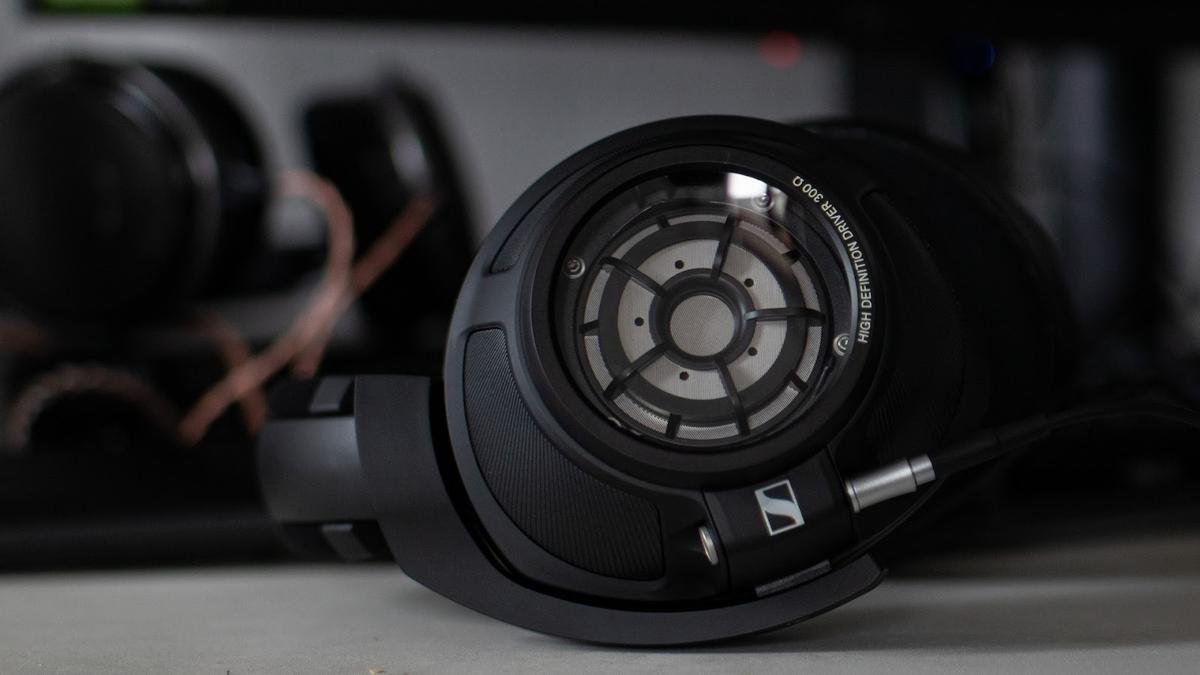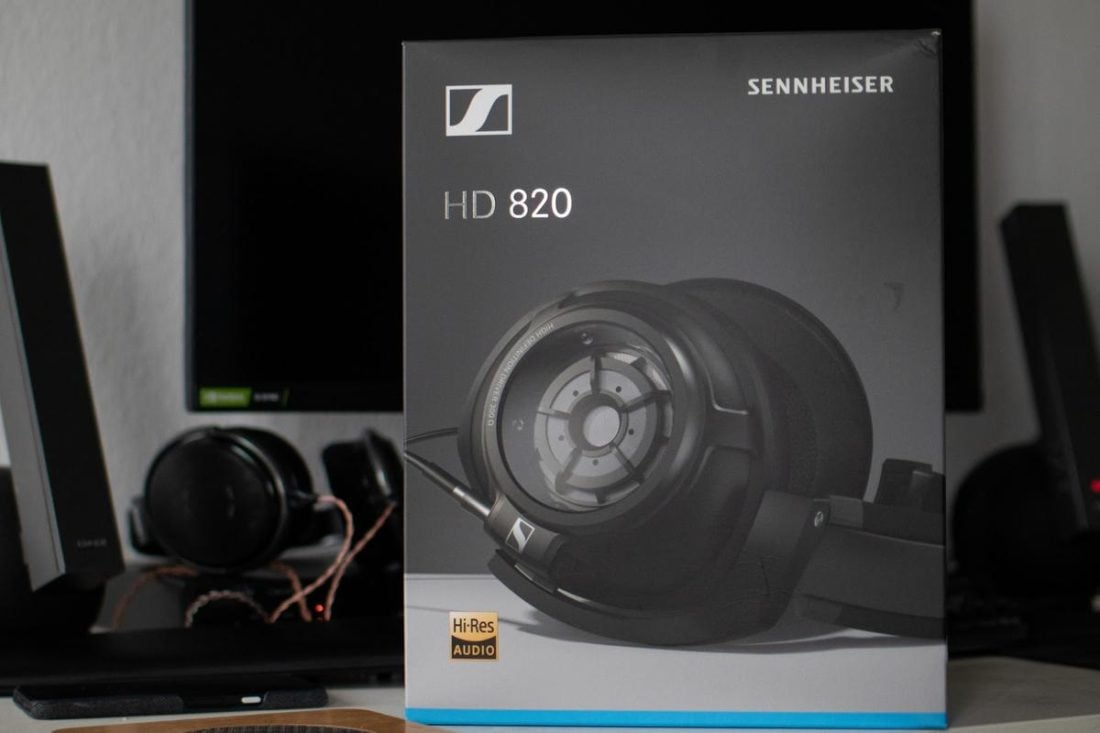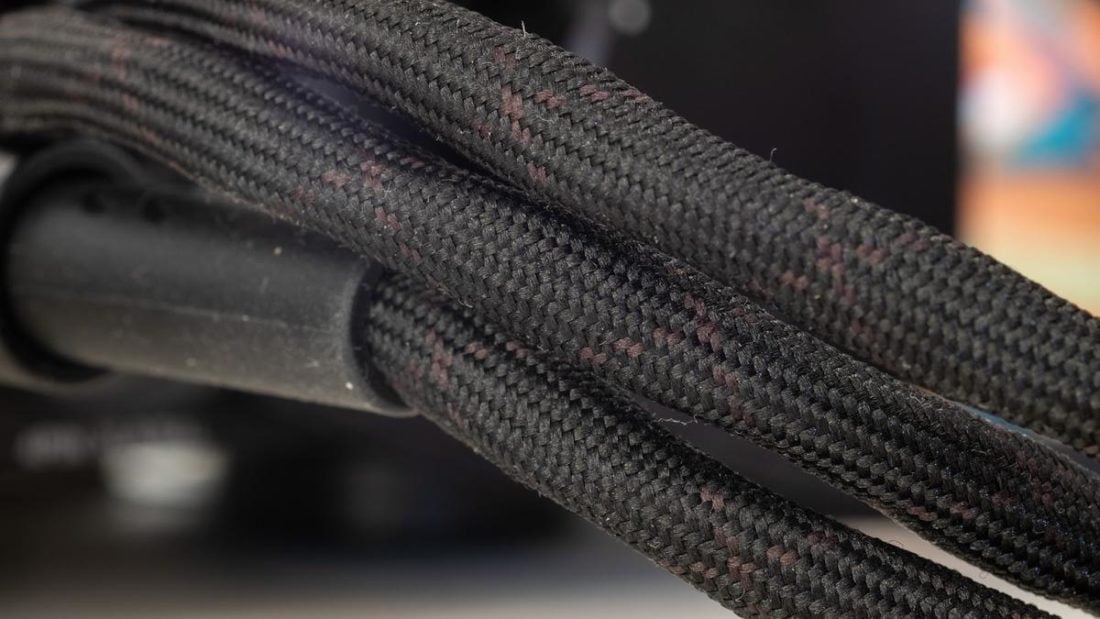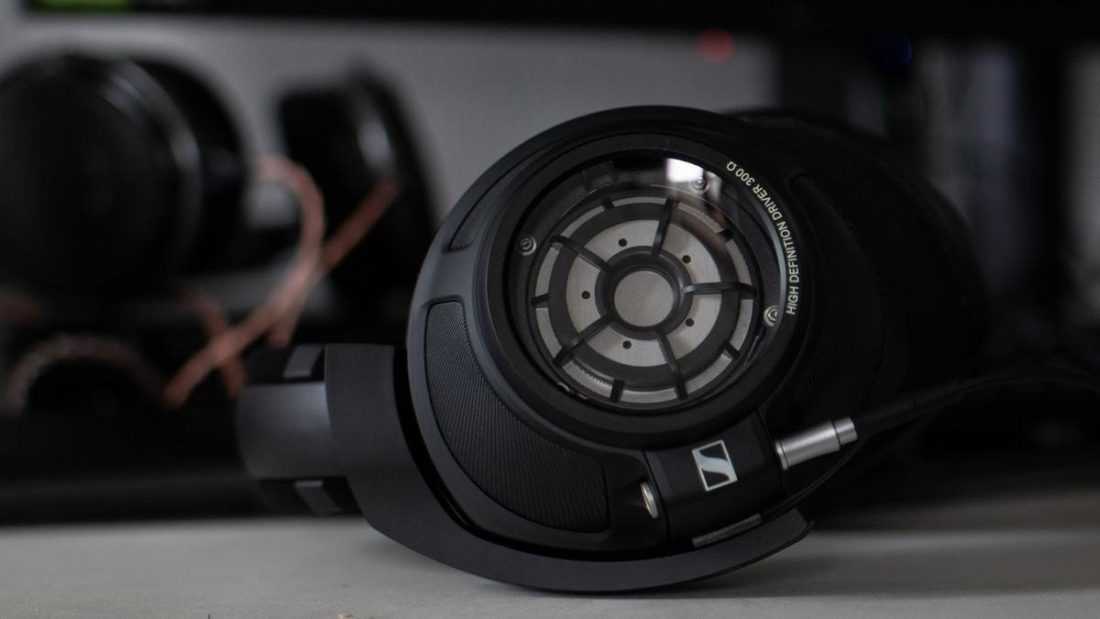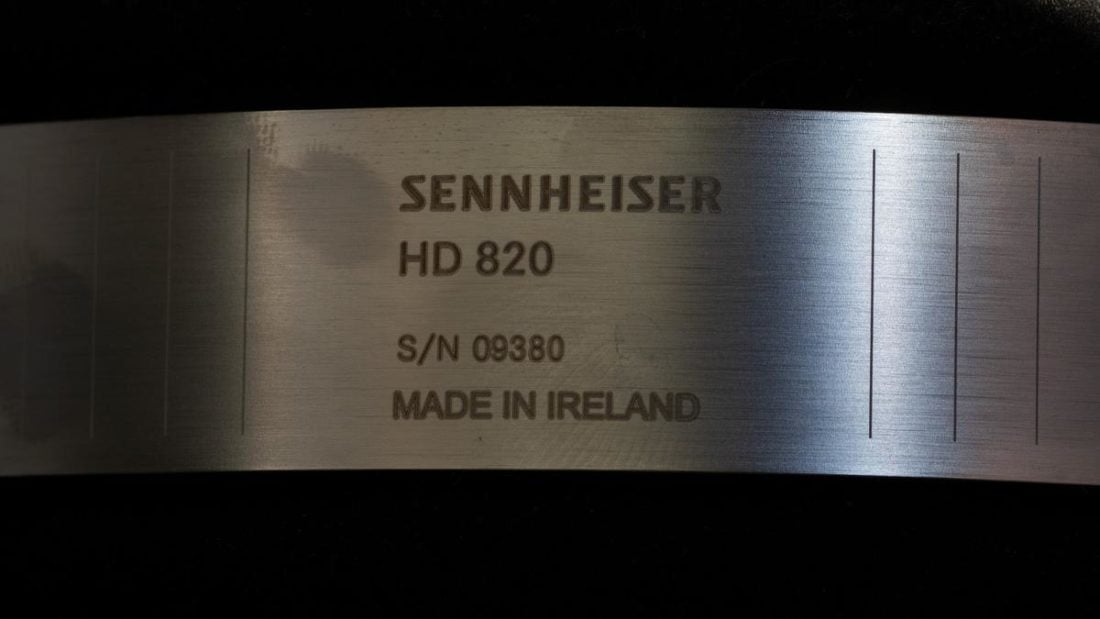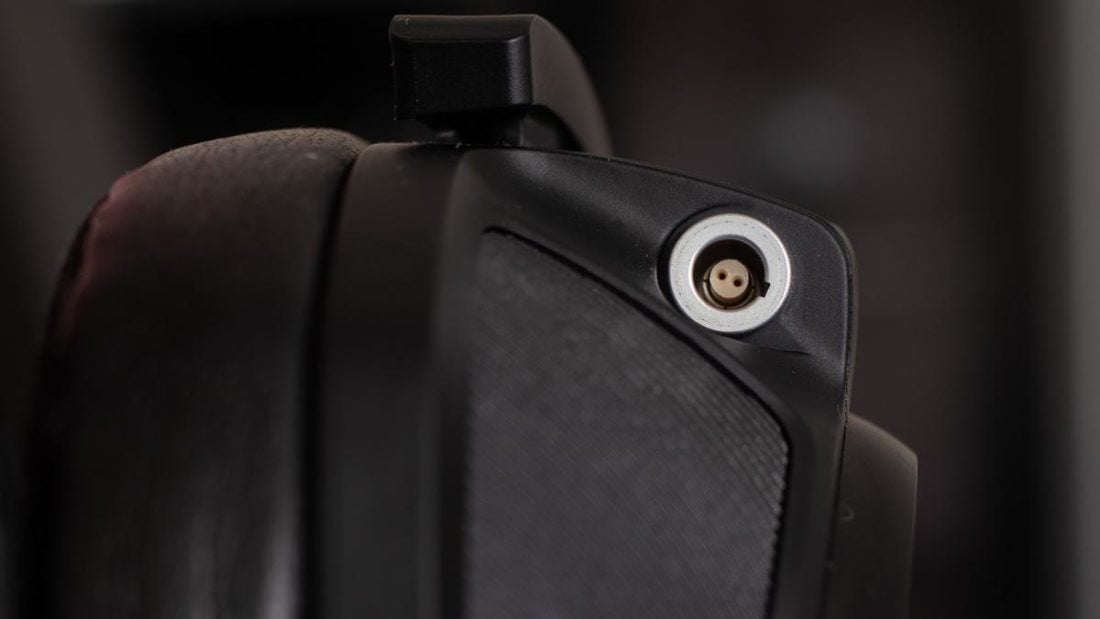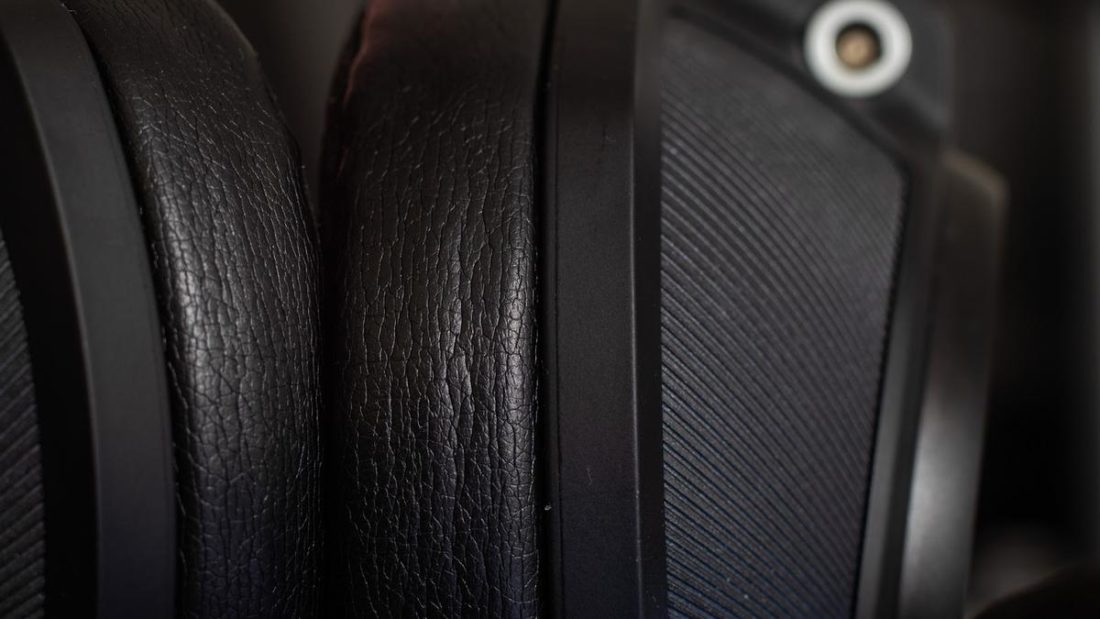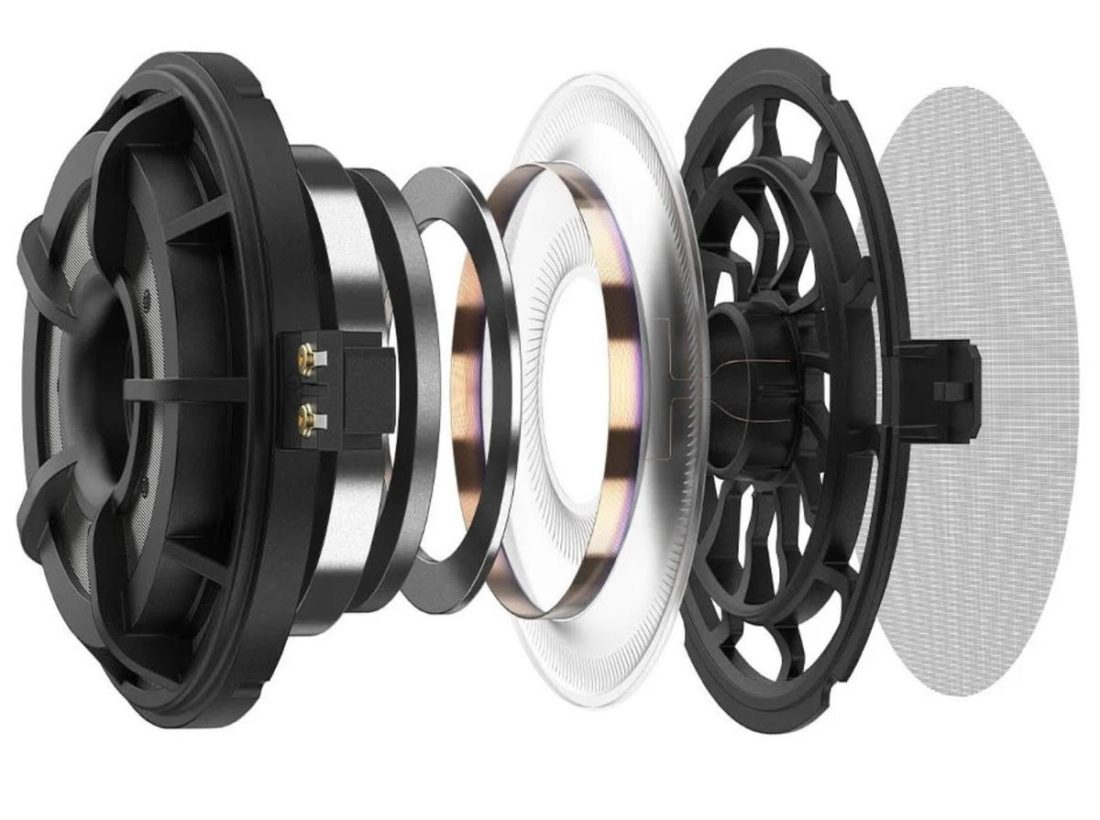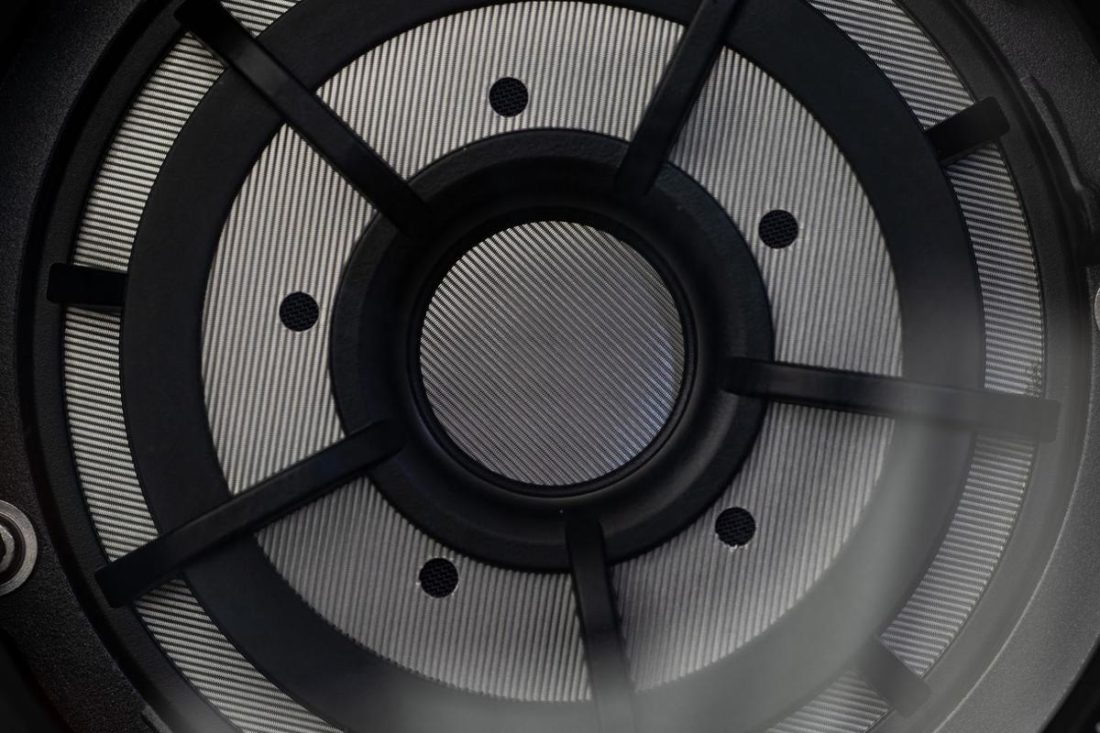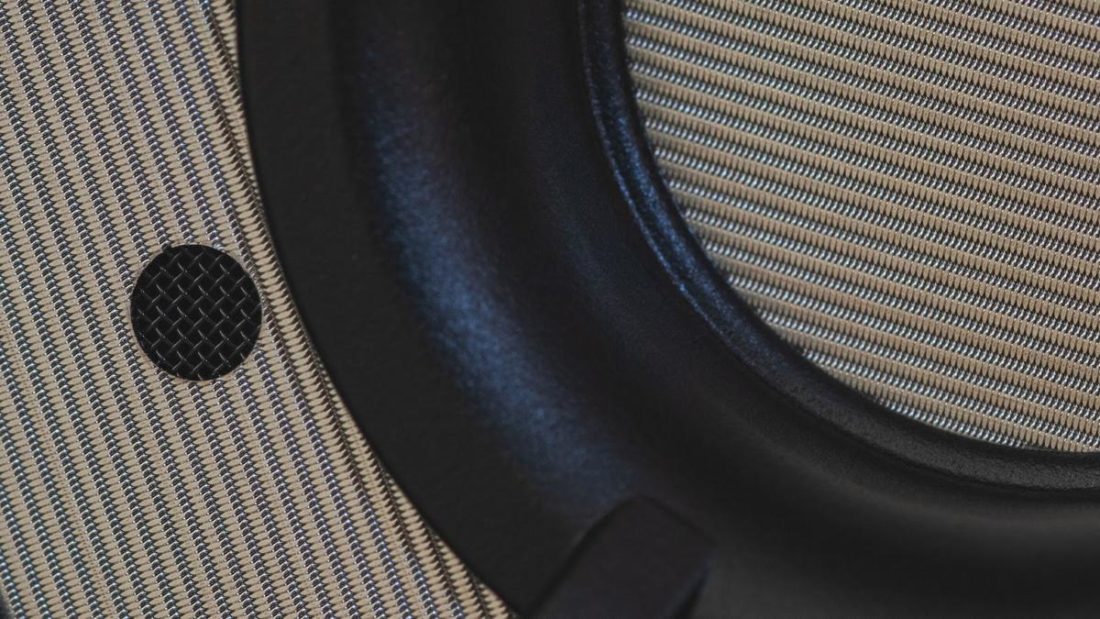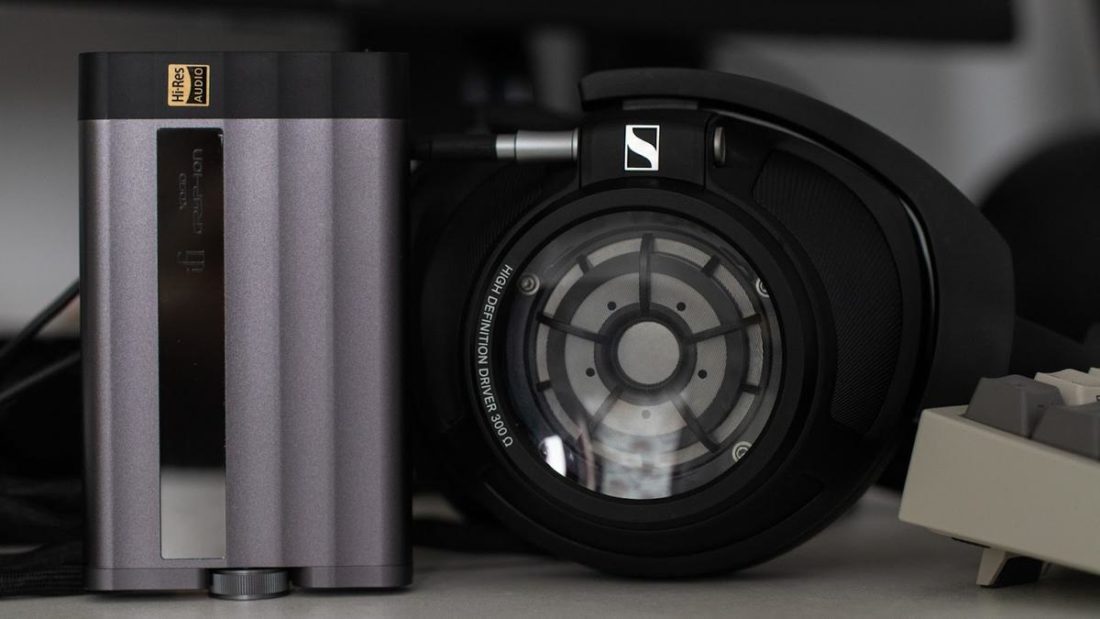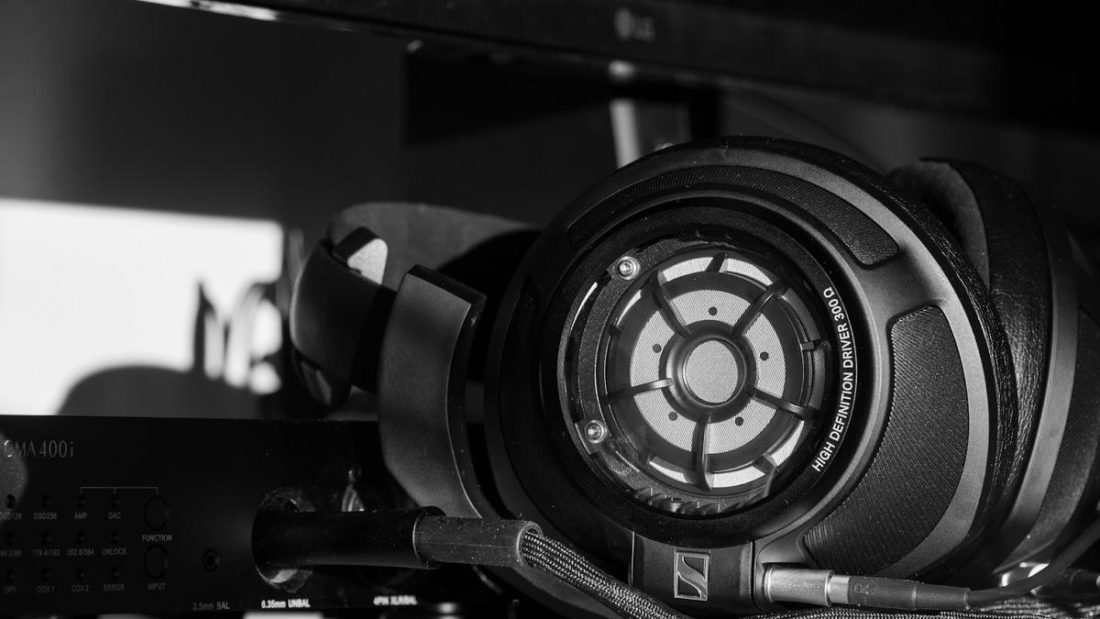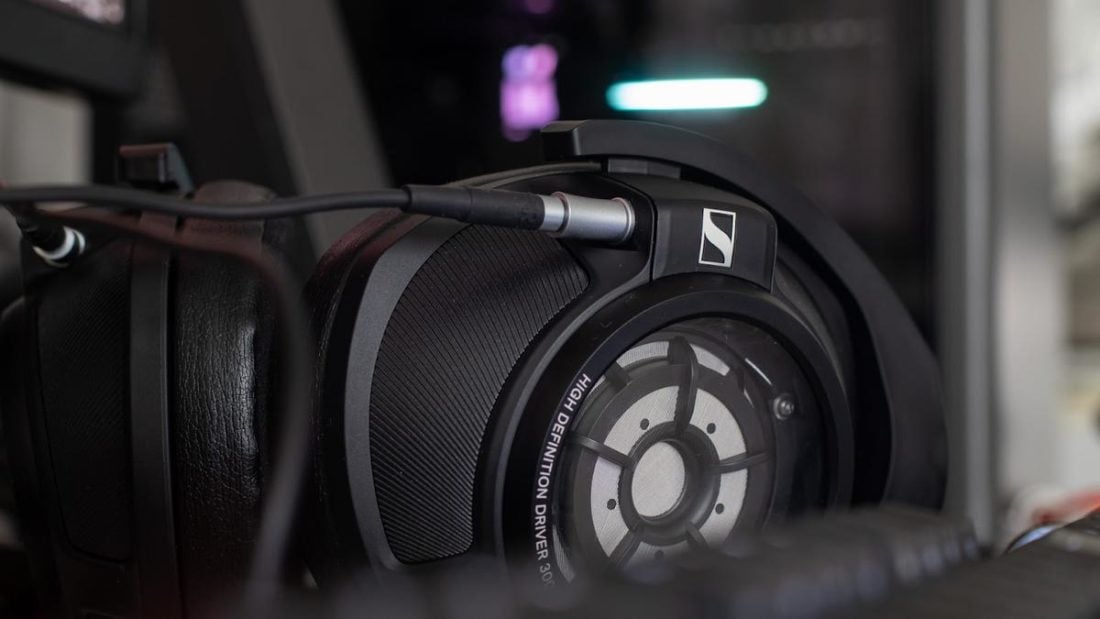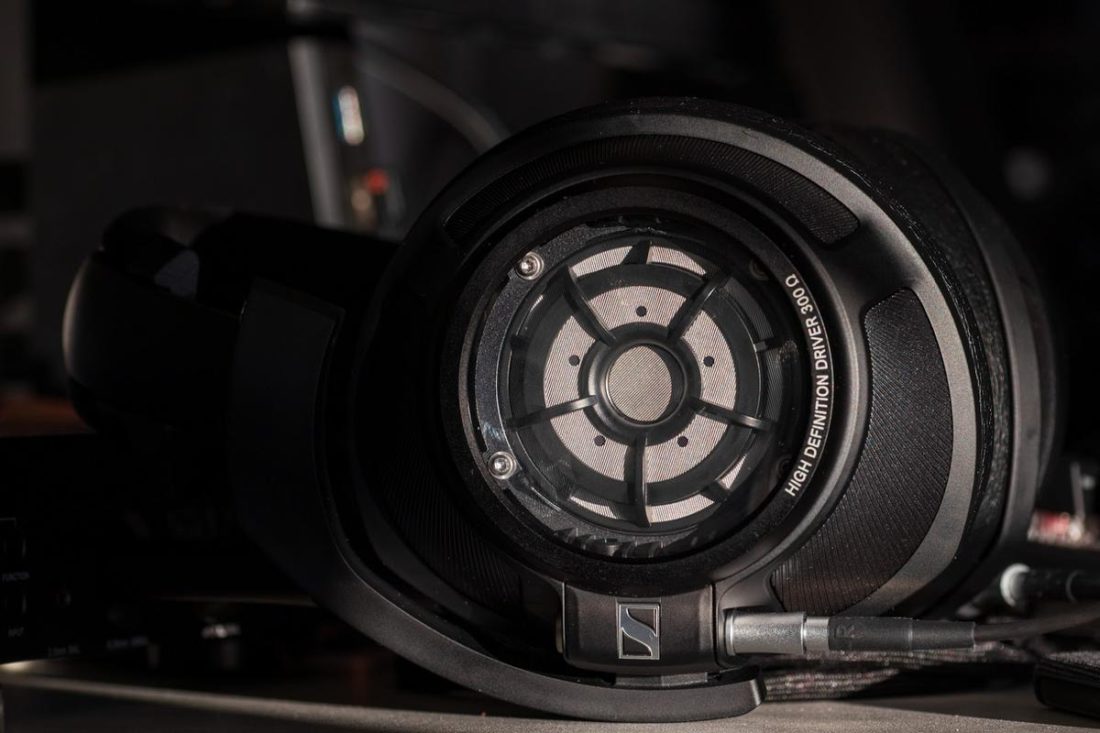Sennheiser’s HD series of headphones have spanned multiple decades and are still going strong. The HD650, for example, were released almost 20 years ago and maintain their cult status even now. The HD800 were Sennheiser’s flagship headphones back in 2008 and they debuted a novel ‘Ring Radiator’ driver with outstanding technical parameters. Later on, the driver and the damping schemes were adjusted to launch the HD800S which fixed some of the treble issues on the original and were less picky with amplification. The HD820 are their current consumer-grade flagship (discounting the unobtanium HE-1) and aim to bring the staging and imaging properties of the HD800S into a closed-back form. Easier said than done, so let’s see how close Sennheiser gets to the mark.
Technical Specifications
Form: Closed-back Drivers: 1 X Dynamic driver – 56mm Ring Radiator driver (patented) Impedance (Ohm): 300 Ohms Sensitivity (dB): 103 dB @ 1kHz Frequency Response (Hz): 6 Hz – 48 kHz Removable Cable: Y Source Jack: 6.35mm, 4.4mm pentaconn Cup/Shell Jack: 2-pin ODU circular connectors Weight (g): 360g
Packaging
The HD820s come in an oversized package that, on first impression, weighs a lot! Later on I realized that the user manuals and booklet mostly contribute to the weight. Opening the sleeve you get the same jewelry-box like hard case as found with the HD650.
In the box
Sennheiser HD820 headphones 3 meter 6.35m single-ended cable 3 meter 4.4mm pentaconn cable (can be swapped for XLR at purchase) A USB drive Microfiber cloth
Design
The HD820 share a similar housing design to the HD800 and HD820S with the major difference being the Gorilla Glass on the earcups. The glass has a concave shape and reportedly disperses the resonant frequencies that form within the earcup. The build material is mostly high quality plastic, with the earpads having a leather surround and velour top. The headband is stainless steel and has a smooth, clicked adjustment mechanism. The housings have detachable cable ports unique to the HD8X0 series. Aftermarket cables can run expensive for this reason. The earcups have a moderate amount of swivel and rotate about 30 degrees to the left and right for better adjustment. The earpads can be easily replaced (simply pulling on one end does the trick) and have a different design to the HD800 or HD800S earpads. The HD820 earpads form a tighter seal and have a softer surface. The glass catches smudges and fingerprints and needs maintenance to look good. Initially, I had concerns about the glass requiring careful handling to avoid breakage. Sennheiser reached out to me after the publication of this review to assure that the glass reflectors are unlikely to break during normal operation of the headphones. “I would not worry about the reflectors breaking or their structural integrity at all—they are Gorilla Glass and are not a component that has to absorb structural stress from the headphone or when in use (like a headband, cable coupler, or earcup chassis). They are actually one of the toughest components on the entire headphone.” – Sennheiser
Comfort and isolation
Comfort is excellent, which is rare for many TOTL headphones. The relatively light weight of 360g, combined with adequate padding and the redesigned earpads, facilitate long-term wearing. Isolation is great as well, as the Gorilla Glass earcups block outside noise effectively.
Internals
In fact, the ring-radiator driver technology deserves its own article to cover the technical design in how it differs from a regular dome-shaped diaphragm. Briefly, in a typical dynamic driver, the dome and the surround acts as a single unit during pistonic motion (as in whenever there is any audio signal). However, at higher frequencies, the voice coil moves faster than the surrounding, resulting in phasing issues. This results in two audible phenomena: noticeably worse imaging and higher distortion at high frequencies. To combat this, Sennheiser removed the central dome and mounted the inner and outer ridges of the driver diaphragm directly to the chassis. The voice coil was then placed in the middle of these two ridges, allowing for uniform movement across the entire diaphragm. A rather ingenious solution in theory. So let’s see how the driver system performs in practice.
Sennheiser HD820 Sound
The Sennheiser HD820 have a warm sound signature with some lower-treble focus. What stands out the most though is the soundstage, as these rival many open-back headphones in that regard. One major “caveat” of these headphones is how seal-dependent the sound is. The seal can break with little jaw or head movements and can attenuate the bass. Probably something to keep in mind during auditions.
Bass
Bass is not the HD820’s strongest suit. However, in terms of absolute extension, they deliver. You can hear the sub-bass tones until 25Hz rather easily and they will provide some rumble when called for. However, bass slam is lacking and bass texture is not the best. There is some haziness in the bass region that masks some low-level details. This frequency cut ensures that there is little bass bleed from the boosted 100-200Hz region. At the same time it creates a strange hollowness while transitioning from upper-bass to lower mids. In tracks with heavy bass-line and accompanying vocals, this lack of weight is exacerbated. Case in point: Passenger’s Things You’ve Never Done. All of these culminate into a bass response that is, perhaps, the weakest aspect of the HD820.
Midrange
Sennheiser HD-series headphones usually have good midrange tuning. In fact, their HD600, HD650, and the HD800S have masterful midrange tuning and are often considered reference headphones for that reason. The HD820s are a slight deviation from that lineage. The midrange issues start from the aforementioned upper-bass cut that can make certain low-level tones sound odd. Baritone vocals have a strange chestiness to them that’s not there in the original recording. Sennheiser probably chose to add a bump between 1-1.5KHz to counterbalance this bass cut. While this does flesh out some of the thinner male vocals, they do so at the expense of vocal articulation. There is some nasality in male vocals that is hard to ignore once you hear it. Upper-mids are tuned fairly close to reference, but can be too forward for those who prefer a laid-back signature.
Treble
The treble is characterized by a low-treble peak near 5kHz. This peak is nowhere near as distracting as the OG HD800 but it does rear its head from time to time. On those occasions, vocals can sound shouty and string instruments may sound grating. Fortunately such instances are rare. Other than that, the treble is more or less… perfect. Treble extension is excellent, cymbal hits sound natural and have a raw bite to them without sounding tonally off. Even super-fast drum sections do not sound smeared. Lamb of God’s Ruin, for example, retains every hit of the blistering fast drum section around the 2:40 mark. Overall, treble is the strongest aspect of the HD820’s sound signature which is quite ironic given many user’s struggles with the OG HD800 to tame this region.
Soundstage and imaging
Staging is exceptional and I have not heard a closed back yet with such expansive staging. The HD820s will put many open-back TOTL headphones to shame. If staging is your concern, these will probably exceed your expectations given the form factor. Imaging is precise with even the slightest shift in position being picked up. Center-imaging is excellent as well. Can’t pick any fault here.
Dynamics and speed
Microdynamics (subtle gradations in volume) are delightfully portrayed. Counting Crows’ Miami acts as an excellent showcase in this regard. The driver is also very fast with only a handful of planar and electrostatic driver headphones outpacing the HD820s. Where the HD820s fall short is microdynamics or sudden changes in volume. Bass slam lacks impact and sudden bass drops lack the dramatic effect one should experience.
Comparisons
vs Audeze LCD-XC
Audeze’s LCD-XC is a closed-back version of their venerable LCD-X. Sporting a 106mm planar magnetic driver, the LCD-XC weigh noticeably more than the HD820 (670g vs 360g) and are far from comfortable. In terms of usability, I’d always pick the HD820 over the LCD-XC. Then comes the sound, and the bass response goes strongly in favor of the Audeze. Bass notes have superb articulation and texture, coupled with excellent slam and rumble. The midrange is tuned similarly in terms of upper-mids, though the LCD-XC have a better lower-midrange reproduction (with male vocals especially). Treble is where the HD820 flex their muscle. LCD-XC have slight graininess in the treble and percussion instruments sound somewhat compressed. Treble extension is also too focused on the air frequencies and this can cause fatigue in long-listening sessions.I prefer the HD820 style of treble tuning: brilliant-yet-inoffensive. Soundstage and imaging also go squarely in the HD820’s favor. Microdynamics are better on the HD820 whereas macrodynamic punch is superior on the LCD-XC. General resolution is high on both, although I think the HD820 slightly outresolve the Audeze LCD-XC, especially in the treble region. In the end, I think tonally the LCD-XC are better, though in terms of technicalities the HD820 remain unscathed. Both deserve an audition if you are after a pair of TOTL closed back headphones.
Where to Buy
Conclusion
The Sennheiser HD820 have nearly everything they need to be a remarkable pair of TOTL headphones. They look great (subjectively), the build is fantastic, and comfort is superb. Couple these usability perks with excellent treble, class-leading soundstage, outstanding imaging, and a highly resolving signature, and you should have a winner. The reality is a bit more complicated. The bass response fails to impress and the midrange has tonal oddities. This leaves a bittersweet aftertaste, as you think about what could have been instead of what the HD820s have already accomplished. Nevertheless, the Sennheiser HD820 deserve an audition and I am going to cautiously recommend them based on their exceptional technical performance.
